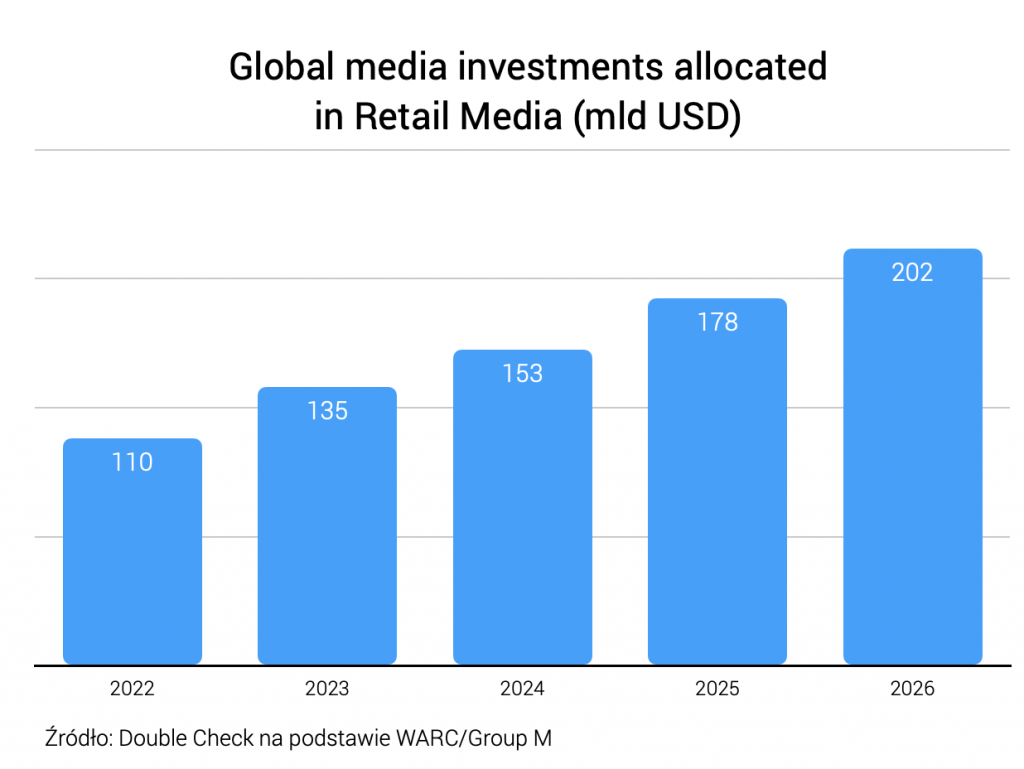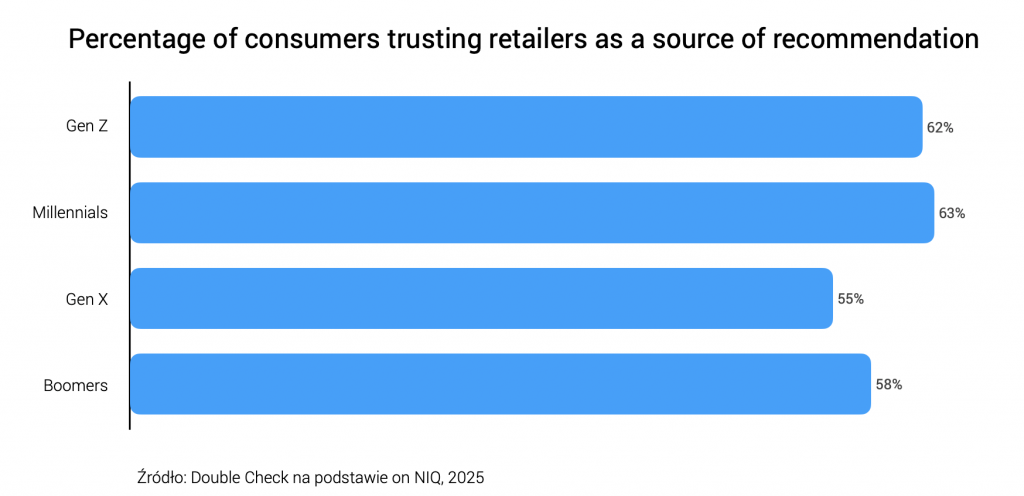Retail media – that is, advertising channels created and managed by retailers – are quickly transforming into the third pillar of the digital advertising market, alongside Google and Meta. Advertisers are allocating ever larger budgets there, and retail chains are becoming full-fledged media players. A key factor supporting this trend is consumers’ trust in retailers as a source of recommendations and shopping information. The article analyses the impact of this phenomenon on the development of retail media and presents strategic guidelines for marketers.
Retail media are gaining in importance
Retail media are advertising spaces available on shopping platforms – in applications, on websites, on shelf screens, in emailing and promotional materials of retailers. They are notonly a new reach channel, but also the intersection of media, data and the purchase decision.
Global spending on Retail Media is growing at double-digit rates year over year and is expected to reach nearly $180 billion in 2025 and exceed $200 billion in 2026. This growth is driven primarily by:
- – the proximity to the moment of purchase,
- – precise first-party data,
- – the ability to measure sales directly.
For advertisers this means greater control over campaign results, and for retailers – a new, high-margin revenue stream, because margins on this revenue source reach 70–80%.

Trust in retailers = higher advertising effectiveness
Retail media benefit from a unique asset: consumers’ trust in the place where they shop. According to NIQ research, 59% of adult Americans trust products recommended by retailers; among Millennials and Gen Z, this proportion exceeds 60%. For marketers this means that a campaign run in the retailer’s environment – for example, a banner on the store’s homepage or a sponsored position in the search engine – has a higher probability of being clicked and converting than in open digital channels. A customer trusts what they see “in the store” much more than social media.

The power of first-party data and closed-loop attribution
Retail media are a channel based on first-party data. Retailers know who bought what, when and for how much – and they can use this data to: build audience segments (e.g. “customers who purchased diapers and formula in the last 30 days”), target with high precision, and measure campaign effectiveness based on actual sales.
This is a unique advantage over platforms based on third-party data (e.g. cookies). Retailers can close the loop: from displaying the ad to the receipt. Such a “closed attribution” allows marketers to accurately measure ROAS and optimize campaigns in real time. As McKinsey reports in its analyses, 69% of advertisers confirm higher effectiveness of retail media compared with other channels, and 82% of them want to increase spending in this channel in the following year.
Retailer is the new medium
Retailers are transforming into media platforms. They have reach (hundreds of millions of visits per month), a shopping context (a customer in “buy now” mode) and full control over the advertising environment (brand safety, UX).
As a result, brands are beginning to treat retail media not only as a performance channel but also as a place to build top-of-mind in the shopping environment. Many retail brands are developing their own auction systems, rich media formats and even internal creative teams.
Recommendations for marketers and media agencies
1. Planning retail media as a permanent component of the strategy
Retail media are not an experiment – they are a channel that requires a planned budget, creative and KPIs. It should be treated with as much seriousness as paid social or search.
2. Close cooperation with retailers
The “we bought a placement” approach is no longer enough. The best advertisers co-create campaigns with the retailer – from data through the promotional calendar to content.
3.Measuringsales effects, not just clicks
Retail media enables the loop to be closed – it is worth taking advantage of this. The KPI should include not only CTR but also: number of baskets, average transaction value, share of sales.
4. Diversification of retail media partners
Not only Amazon and Allegro but also more and more smaller retailers are opening their own media networks – providing better access to niche groups of customers.
5. Integration – including your own
It is necessary to take care of connecting data from the retail media campaign with the brand’s CRM and DMP. Retail media are an excellent source of insights – it is worthwhile to feed the entire brand strategy with them.
Retail Media are currently the fastest-growing digital advertising channel. The scale of trust in retailers, the availability of first-party data and the ability to measure sales mean that marketers cannot ignore it. Success requires a strategic approach, close cooperation with retailers and skillful use of data. Companies that are already investing in competencies in this area will gain an advantage in an increasingly complex communication ecosystem.